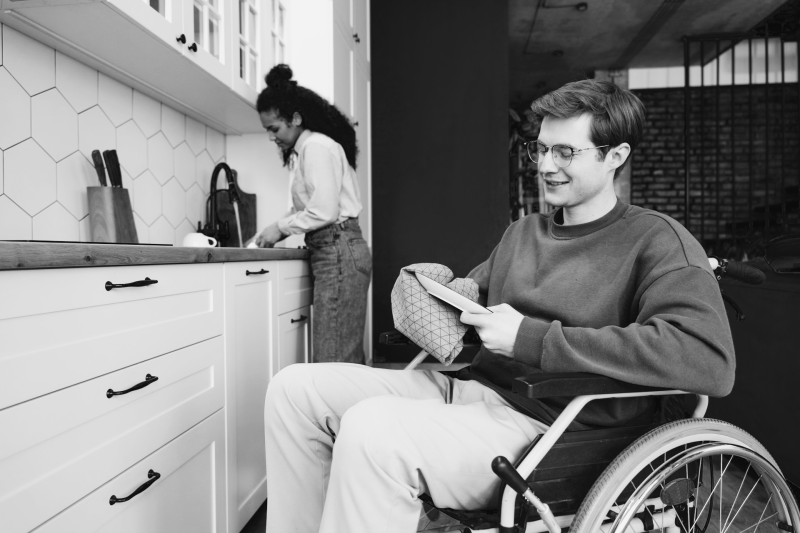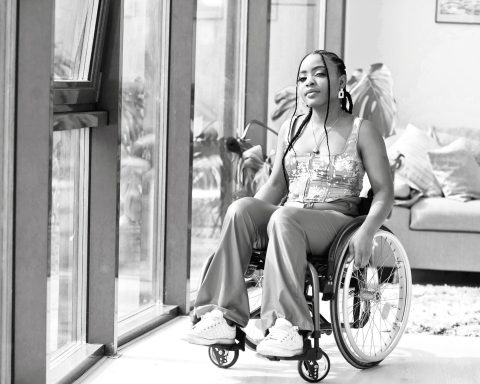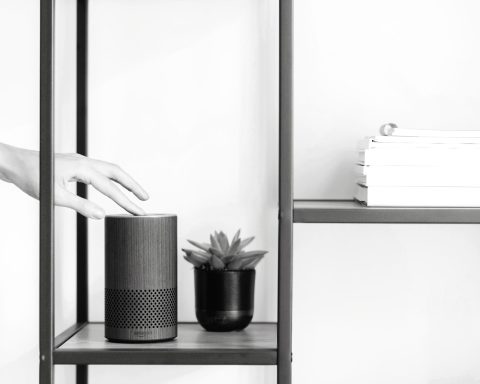You’ve just finished cooking, and the spices need to be returned to a cabinet above counter height. You angle your wheelchair, stretch, and fail. You get frustrated. When you’re in a wheelchair, daily moments like this turn simple tidying into a complex maneuver of reaching items with grabbers, swiveling around tight corners, and orchestrating light switches from awkward angles.
Just a few years ago, you had no choice but to live with this. However, today, there are numerous smart home devices designed for individuals with disabilities. Imagine being able to organize everything in your home with just a tap of the remote control from your wheelchair. Sounds exciting, right?
In the pages ahead, you’ll see how these devices aren’t just gadgets — they’re adaptive tools that re-imagine accessibility to help you reclaim corners of your home previously out of reach. And, of course, it helps you to be more independent within your home.
Ready to turn frustration into freedom? Dive in and discover how smart home technology for wheelchair users can elevate independence and make the home organization feel effortless. Because your home should adapt to you, not the other way around.
Common home organization challenges for wheelchair users
If you’ve ever felt like your own home works against you, you’re not alone. Traditional homes simply weren’t designed with wheelchair accessibility in mind.
For example, if you want to store your belongings, you’ll find the storage spaces are often too high. Even something as basic as organizing your items can feel overwhelming when most storage solutions aren’t built with your mobility in mind. The result? Clutter builds up, you become too reliant on caregivers, and your sense of control over your space slowly fades.
What should be quick and simple can take extra time and effort as you navigate your life from a wheelchair.
Another simple task is pressing light switches or thermostat dials. Without accessibility in mind, you have to do a Herculean task for this simple thing. Stretching your body and arms as high as possible from your wheelchair.
But here’s the good news. You don’t have to settle for a home that feels like a daily challenge. The right accessible smart home devices can bridge the gap between what’s difficult now and what’s possible with a more accessible, organized setup.
Overview of smart home solutions for accessibility
If you’re still unfamiliar with home automation for disabled individuals, well, it’s like doing magic.
Imagine telling your lights to dim, your closet shelves to lower, or your coffee maker to start — all without moving from your wheelchair.
Tools like voice assistants and smartphone apps replace the need to maneuver into difficult positions or ask for assistance. Remote-controlled shelving can lower storage with a button press, while smart plugs and sensors allow you to control electronics from anywhere in your home.
It’s all about making your environment work with you, not against you.
These aren’t luxury items; they’re practical and life-changing solutions that bring the home to you.
You can regain control over the pace and flow of your day. Tasks that once seemed impossible become possible because you have the right tools at your fingertips. These advances mean greater independence and reduced dependence on caregivers.
As your home becomes more responsive, so does your sense of ease and confidence. Smart technology restores your freedom to live on your terms, in a space that supports your needs and reflects your choices.
How to integrate smart home technology for wheelchair users
Bringing smart home accessibility features into your home starts with making informed choices backed by practical and science-based insights. The key is choosing tools that truly fit your mobility needs and support your routines.
These actionable insights help you avoid trial-and-error frustrations and instead build a smart, organized space that genuinely improves your independence.
Implement voice-activated smart storage and controls
Picture the upper kitchen cabinet sliding down to your lap level the moment you say, “Lower pantry shelf.”
Voice-activated storage systems let you reach every corner of your home without a single stretch or risky transfer.
You can start by pairing a mainstream voice assistant (Alexa, Google Assistant, Siri) with smart-compatible cabinet lifts and motorized pull-out units. These devices connect through Wi-Fi or Zigbee hubs, so a simple verbal cue or tap in an app glides shelves into the perfect position, then returns them once you’re done.
For smaller spaces, swap fixed bookcases and bedside tables for modular shelves equipped with servo motors. Many models mount flush to the wall and descend vertically, saving floor space while keeping essentials (i.e., meds, remotes, chargers) at fingertip height.
Don’t overlook your drawers! Retrofit kits can add voice-triggered open/close mechanisms to kitchen islands, bathroom vanities, and even under-bed storage, eliminating the need to grip handles or brace against surfaces.
Automate climate and lighting for convenience
Just like your storage, lighting can be effortless as well. Voice-activated bulbs and switches let you brighten the room before you wheel in.
Pair fixtures with motion or door sensors, and the hallway lights up automatically, so you don’t have to angle your wheelchair for awkward stretches toward high switches.
Scheduling sunrise-to-sunset routines in the system helps keep your circadian rhythm on track, and color-temperature adjustments can boost focus during the day or promote calmness at night.
By orchestrating climate and lighting from your small gadgets, you eliminate unnecessary effort for this simple task and gain a sense of mastery over your environment.
Read more: Tech-Powered Tranquility With Smart Home Environments
Integrate smart home ecosystems for seamless control
Whether you choose Google Home, Amazon Alexa, or another ecosystem, linking every compatible device into one platform means you don’t have to juggle a dozen separate apps.
Utilize programmable routines to automate repetitive tasks. With this feature, everything is triggered automatically at a chosen time or with one tap on an accessible dashboard.
For example, set a “Return Home” scene that unlocks the door, lights a path from the entryway to the kitchen, and queues relaxing music. Or build an “Evening Wind-Down” routine that lowers the thermostat, dims bulbs to a soothing amber, and arms your security system.
Most ecosystems also support adaptive learning. The more you use them, the better they anticipate your patterns.
By centralizing control, you reduce physical strain, minimize mental clutter, and keep your living space organized without constant hands-on adjustments — freeing you to focus on what matters most each day.
Read more: Accessible Living: Tips and Tricks for Organizing Homes for Wheelchair Users
Take advantage of smart cleaning devices
With your limited mobility, even simple cleaning tasks can become painstakingly done.
But with today’s technology, you won’t have to worry about living in a dirty space.
Mops and robot vacuums are the most convenient devices available. They only require a few taps on your phone or a simple voice command to plan, send them to a specific room, or stop them immediately if an urgent matter arises. Most of them also feature advanced capabilities, including live mapping, bump detection, and auto-emptying.
Say goodbye to bending, lifting, and ducking around cramped areas to clean the floors.
You can add other smart devices, such as automated air purifiers, which have sensors to detect air quality and adjust settings accordingly. Also, robotic window cleaners that handle hard-to-reach glass surfaces.
The beauty of these technologies lies in their integration. When connected to a smart home system, you can control everything from a central device. This reduces the need for physical movement and gives you control over your environment from anywhere.
In conclusion
Your home should feel like a place of comfort and control, not a daily obstacle course. As a wheelchair user, you will face the emotional weight of trying to maintain your space while constantly being challenged by physical limitations. But that frustration doesn’t have to be long-lasting.
Throughout this article, you’ve learned that smart home solutions for mobility issues are far more than gadgets; they’re practical solutions that empower you to reclaim control of your living space.
Now, start exploring smart devices that align with your mobility needs. Look for tools that not only fit your routines but also make your day-to-day life smoother, safer, and more self-directed.
You deserve a home that adapts to you and respects your independence. With smart home technology, that is more achievable than ever.
If you want to see more resources on smart home systems or organizing for wheelchair users, check out the Home Organization Science Labs. The lab uses the research of the Institute for Life Management Science Labs to produce courses, certifications, podcasts, videos, and other tools. Visit the Home Organization Science Labs today.
Photo by Raj Tuladhar on Unsplash




